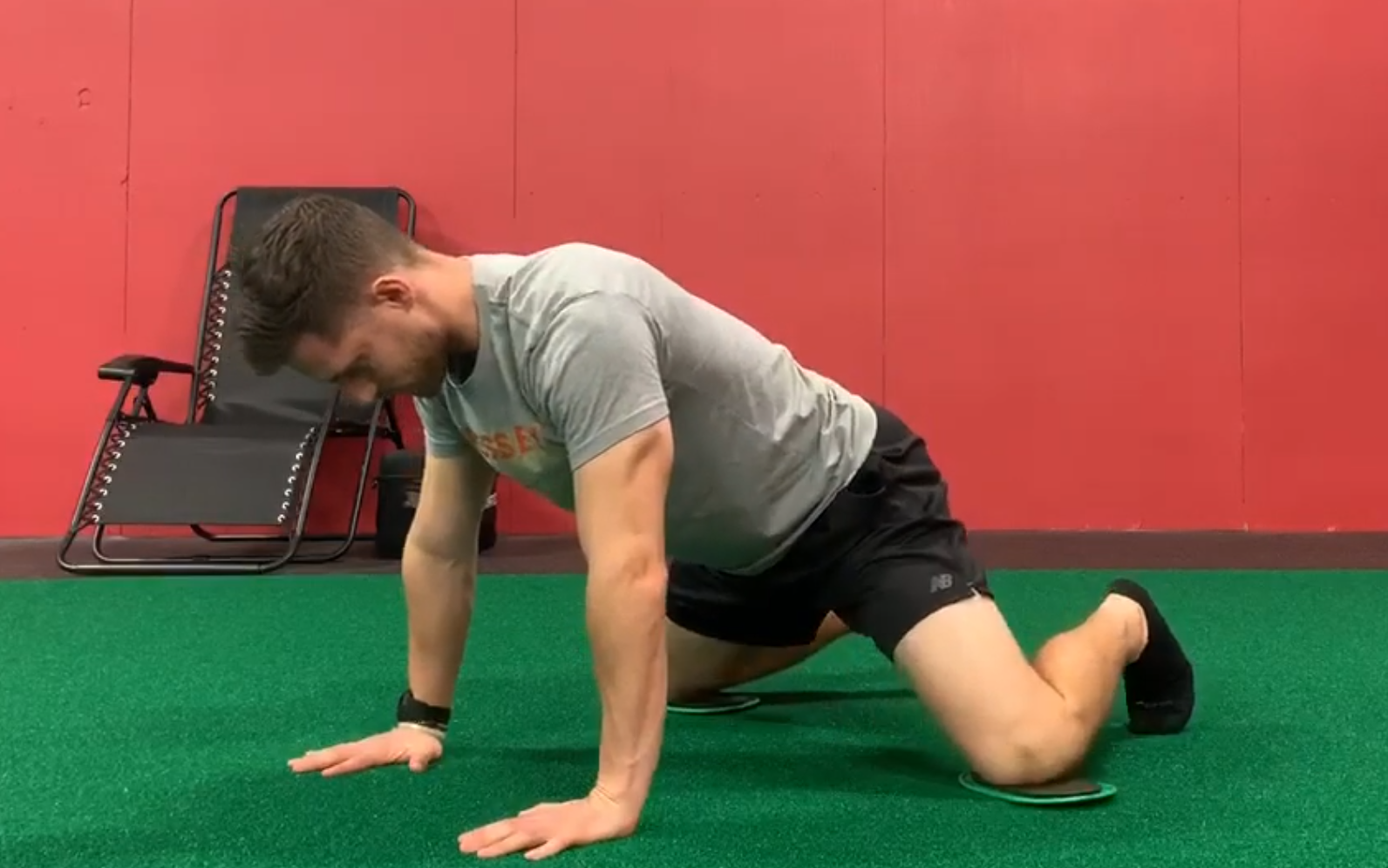
Exercise of the Week: Adductor Slides
Today’s guest post comes from Cressey Sports Performance – Florida Director of Performance, Tim Geromini.
One of the more forgotten muscle groups in the lower extremity is the adductor (groin) complex. Often, there is so much focus on glute activation and hamstrings range of motion that we overlook the adductors. As Eric has written in the past (all the way back in 2004!), depending on the population, adductors can get injured because they’re either overactive or weak. In other words, they need to be both “long and strong.” Enter an exercise that not only works on eccentrically creating range of motion at the adductors, but concentrically strengthening them, too!
Some of the benefits of Adductor Slides – and the associated coaching cues needed to make the most of your efforts:
1. Eccentric Control: The adductors are mostly known to absorb force in change of direction movements as they experience a ton of eccentric stress when an athlete has to cut or adjust his position. This exercise is not a traditional passive stretch as we are actively stretching the adductors into hip abduction. This should be a slow and controlled purposeful movement, keeping the hips in line with the knees. A cue that works well is “pretend there is a band attaching the Valslides together; now stretch that band.” This cue helps you understand to put force into the ground as you spread your knees as far apart as possible (another helpful cue). You are only going to go as low as your range of motion allows, so work within the range you have. Keeping your feet on the ground is a good starting point. As your range of motion and strength increases, try keeping them off the ground to progress the exercise.
2. Concentric Strength: Now that you have a sufficient stretch of the adductors, it’s time to strengthen them driving up into hip adduction. A helpful cue would be “pull the turf together on the way up.” The adductors play a big and often overlooked role in creating rotational power. At CSP, we often talk about shifting your weight from your back hip to your front hip on a medicine ball exercise, on the mound, and even in the cage. In this instance the role of the adductors is to help internally rotate the femur to create power in the lower half. Without sufficient adductor strength, you’re going to leave a lot of power on the table.
3. Anterior Core Strength: Neither of the two benefits listed above work very well if you can’t maintain a neutral spine while doing them. In other words, don’t let the lower back arch. It’s important to note that the adductor muscles originate on the pubis (the bottom portion of the pelvis) and are vital in controlling pelvic stability. If you are doing this exercise on your own, it may be helpful to place an object on your low back and make sure it doesn’t fall off as you go through the movement. Again, think slow on the way down and fast on the way up.
We typically program this exercise for 8 reps either in a warm-up or as a pairing with a rotational med ball exercise. As a regression, you can do one leg at a time while the non-Valslide knee is positioned on the ground/pad.
About the Author
Tim Geromini is the Director of Performance at Cressey Sports Performance – Florida. Prior to joining the CSP team; Tim spent time with the Lowell Spinners (Class A Affiliate of the Boston Red Sox), Nashua Silver Knights (Futures Collegiate Baseball League), Cotuit Kettleers of (Cape Cod Baseball League), and UMass-Lowell Sports Performance. You can contact him at timgero@gmail.com and on Twitter (@timgeromini24).



